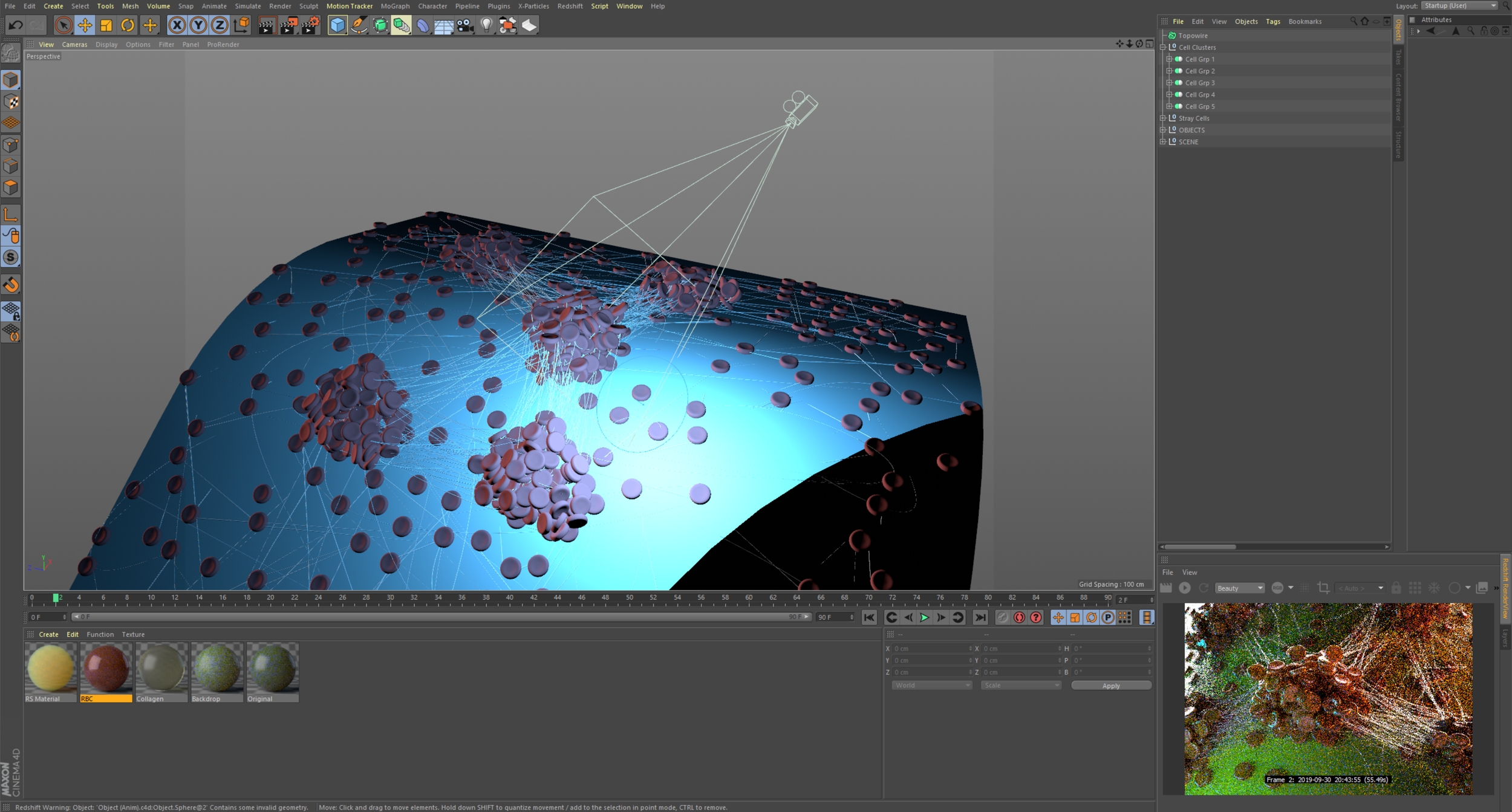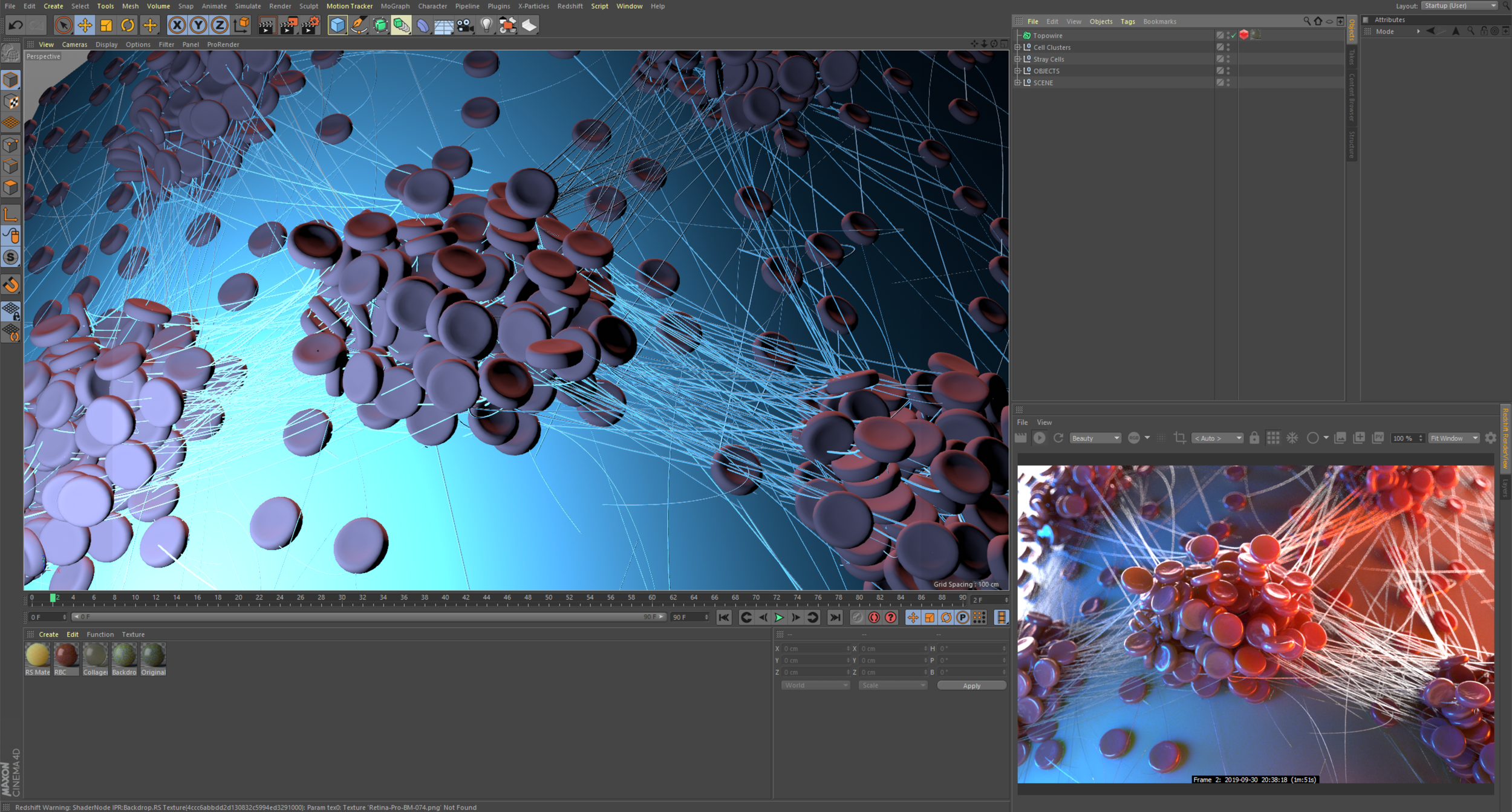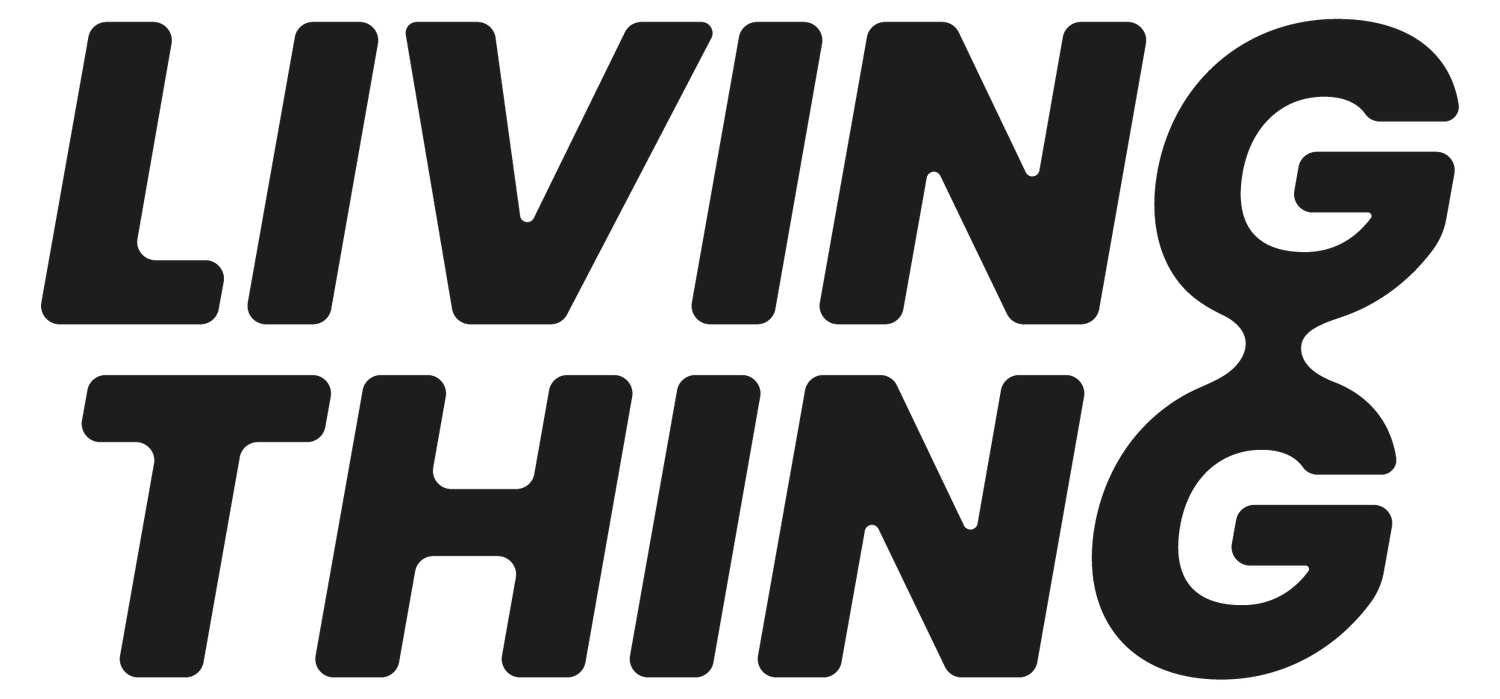
Building a Blood Clot
Creating the Image
For an upcoming animation we decided to do a study on representing a blood clot. Usually they’re depicted inside a blood vessel, but this project required that we represent a blood clot forming outside of the body.
In Cinema 4D we built a slightly curved plane, and textured it with organic patterning. From there we modeled a single red blood cell, and cloned it in various ways to create the clusters of cells seen in the final image.
Next, we implemented a great plugin called TopoWire to create the spindle-like strands of fibrin to connect the clots. Further iterations will include platelets and immune cells to complete the lineup of commonly-seen cells in clotting and injury.


Using Topowire
Topowire has proven to be a fantastic plugin for creating organic, fiber-like arrays. Here are some of the settings we used to achieve the final look we got.
In the objects list, we clustered red blood cells into groups, and directed the connections between them, setting a maximum distance, so only groups that were close to each other connect. We determined the fibrin thickness using a tapering profile, seen in the adjacent graph.
Finally, we created some sag in the fibers to make them look more natural, by adjusting the curvature setting.
Subsurface Scattering
The final image was rendering in Redshift, using materials with subsurface scattering (SSS).
SSS is a mechanism of light transport in which light that penetrates the surface of a translucent object, is scattered by interacting with the material, and exits the surface at a different point. It’s often present in organic surfaces, such as skin and viscous liquids. A common example of SSS can be seen when holding a flashlight against your hand.
Node-based Materials
Redshift implements node-based materials, which you can see in the image below. Node-based materials are incredibly powerful.
Maxon describes them, saying “Each node offers a specific function but when you combine them, the possibilities are endless. You can easily drag wires to connect inputs and outputs and add converters to existing connections.” We used a very simple SSS-oriented material for our cells, with subtle bump mapping for texture.
Final Result
In the end we were able to achieve the effect we were looking for using TopoWire, and are excited to continue finding new and interesting ways to implement it in organic structures.





